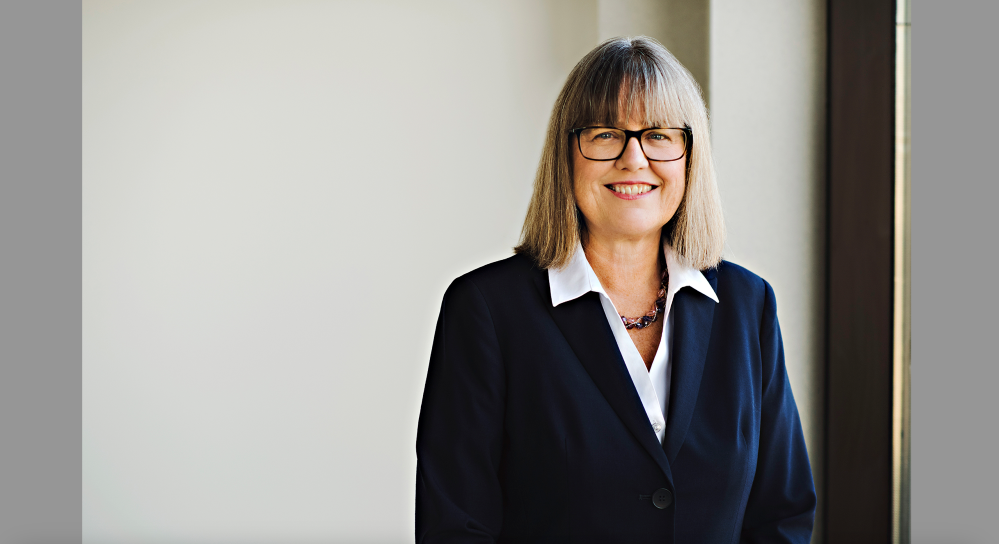Posted 11:07 a.m. Wednesday, Sept. 6, 2023

Nobel Prize Winning physicist shares the discovery that paved the way for the highest-powered lasers in the world
Most of the highest-powered lasers in the world use a technique called chirped pulse amplification (CPA). These ultra short, yet extremely high energy laser pulses deliver modern conveniences from laser eye surgery to perfectly-cut glass on cellphone screens.
One of the physicists behind the discovery of CPA —co-winner of the 2018 Nobel Prize Winner in Physics — will give a public lecture about CPA and its implications during the 21st Annual Distinguished Lecture Series in Physics at UW-La Crosse.
2018 Nobel Prize Winning Physicist Donna Strickland will present “Generating High-Intensity, Ultrashort Optical Pulses” at 5 p.m. Thursday, September 14, in Centennial Hall, Skogen Auditorium A, room 1400. She will also give a physics seminar “From Nonlinear Optics to High-Intensity Laser Physics,” a more in-depth look at the discovery, at 3:20 p.m. Friday, Sept. 15, Centennial Hall, Skogen Auditorium A, room 1400. Both events are free and open to the public.
Lasers, an invention of the 1960s, are very bright, narrow beams of light where the light waves align creating a stronger distance and intensity than the typical light from a light bulb. They allowed the world new opportunities in research, surveying and manufacturing.
But science and ingenuity didn’t stop with the laser’s initial discovery.
Public Lecture: “Generating High-Intensity, Ultrashort Optical Pulses”
In the 1980s, Donna Strickland and Gérard Mourou developed a technique that increased the intensity of the laser light wave by more than a factor of 1,000. CPA for lasers could deliver short pulses of light that knocked the electrons off their atoms. It was a new understanding of laser-matter interactions, and led to the development of new machining techniques that are used in laser eye surgery, micromachining of glass used in cell phones and many more everyday consumer products and processes that require precise, high-intensity laser systems.
Physics seminar: “From Nonlinear Optics to High-Intensity Laser Physics”
The laser increased the intensity of light that can be generated by orders of magnitude and thus brought about nonlinear optical interactions with matter. CPA changed the intensity level by a few more orders of magnitude and helped usher in a new type of laser-matter interaction that is referred to as high-intensity laser physics.
In this talk, Strickland will discuss the differences between nonlinear optics and high-intensity laser physics. The development of CPA and why short, intense laser pulses can cut transparent material will also be included. She will also discuss future applications.
About Donna Strickland
Strickland is a professor in the Department of Physics and Astronomy at the University of Waterloo and is one of the recipients of the 2018 Nobel Prize in Physics for developing chirped pulse amplification with Gérard Mourou, her doctoral supervisor at the time. They published this Nobel-winning research in 1985 when Strickland was a doctoral student at the University of Rochester. Strickland earned a B.Eng. from McMaster University and a doctoral degree in optics from the University of Rochester.
Strickland was a research associate at the National Research Council Canada, a physicist at Lawrence Livermore National Laboratory and a member of technical staff at Princeton University. In 1997, she joined the University of Waterloo, where her ultrafast laser group develops high-intensity laser systems for nonlinear optics investigations. She was named a 2021 Hagler Fellow of Texas A&M University and sits on the Growth Technology Advisory Board of Applied Materials.
Strickland served as the president of the Optica (formerly OSA) in 2013 and is a fellow of Optica, SPIE, the Royal Society of Canada and the Royal Society. She is an honorary fellow of the Canadian Academy of Engineering and the Institute of Physics, an international member of the US National Academy of Science and member of the Pontifical Academy of Science. Strickland was named a Companion of the Order of Canada.
This Distinguished Lecture in Physics is co-sponsored by University of Wisconsin-La Crosse Alumni & Friends Foundation, Inc., the Department of Physics and the College of Science and Health.
